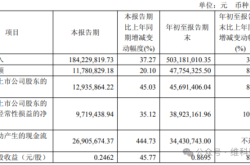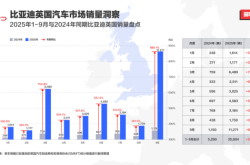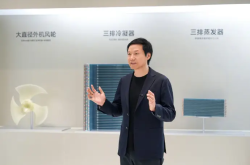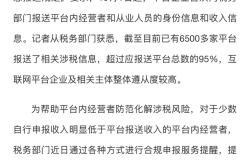Kuaishou Boosts Revenue without Price Hikes, Yet Kuailing AI Faces Challenges in Bridging Cost Gaps; Long Journey Ahead
![]() 03/31 2025
03/31 2025
![]() 553
553
A year ago, the nascent forces of the internet were still vigorously reshaping the industry landscape. Pinduoduo and ByteDance, which achieved remarkable growth despite market trends, gained global prominence. Meanwhile, established players Tencent and Alibaba grappled with finding new incremental markets.
A year later, AI has officially emerged as a new frontier for competition among many internet technology companies, starting from scratch. Recently, Chinese internet giants led by Alibaba and Tencent unveiled their latest annual financial reports, all highlighting a common theme eagerly anticipated by the market: substantial investments in AI.
Huawei, a technology behemoth, also joined the fray. Its Executive Director Wang Tao publicly stated that to welcome the accelerating era of general artificial intelligence, the company would comprehensively promote its All Intelligence strategy.
In this trend, Kuaishou, a leading content community and social platform, utilized a significant portion of its recently released annual financial report to introduce its AI layout and strengths, underscoring the platform's future growth trajectory. In response, some self-media outlets quipped, "This isn't a financial report meeting; it's a Kuailing AI launch event."
Evidently, AI will be pivotal in reshaping the internet and even the technology sector, a consensus that has begun to take shape within the industry.
Amid this consensus, many capital forces are seeking new investment opportunities. Zhang Yidong, Chief Economist at Industrial Securities, noted, "As AI technology gradually matures, the growth of leading internet companies will rebound, and their valuation will shift from the downward spiral of the past four years to an upward trajectory."
Can Kuaishou, once a pioneer in the short video era, reclaim its early listing highs with Kuailing AI as its stepping stone?

Figure: Screenshot from Kuailing AI 1.6 model concept promotional video
Short Video Leader: The Dual Imperative of Embracing AI
Amidst slowing internet industry growth and peaking traffic dividends, it is imperative for short video giant Kuaishou to venture into AI, an endeavor where it also possesses inherent advantages.
Recently, Kuaishou attempted to address market doubts about its growth resilience with impressive revenue and profit figures. Total revenue for the year stood at 126.9 billion yuan, a year-on-year increase of 11.8%; adjusted net profit was 17.7 billion yuan, up 72.5% year-on-year.
Despite this seemingly robust financial report, Kuaishou's share price continued to decline. On March 25, the day after the performance disclosure, the share price dipped over 5% intraday. Behind this "revenue growth without price hikes" lies both the strategy of capitalizing on short-term favorable conditions and investors' concerns about the slowdown in Kuaishou's main station business.
From a financial standpoint, Kuaishou's profitability has significantly improved. The gross profit margin rose from 50.6% to 54.6%, and the operating profit margin doubled to 12%, reflecting remarkable achievements in cost reduction and efficiency enhancement; the company's operating profit surged 137.7% to 15.29 billion yuan throughout the year.
However, similar to most internet service companies, revenue growth slowdown has become a persistent challenge for Kuaishou. Essentially, this is a collective manifestation of the internet traffic entering a stage of stock competition.
The financial report reveals that Kuaishou's revenue in the fourth quarter of 2024 was 35.4 billion yuan, a year-on-year increase of merely 8.7%, falling short of market expectations of 127.24 billion yuan.
More notably, the core growth engines are diverging: advertising revenue accounted for 57%, with a year-on-year increase of 20.1%, but the growth rate decelerated from 23% in 2023; although e-commerce GMV surpassed 1.39 trillion, the growth rate declined from 28% in 2023 to 17.3%; simultaneously, user growth exhibited fatigue, with daily active users in the fourth quarter increasing by 4.8% year-on-year, a nearly halved growth rate compared to 8.3% in the first quarter of 2023; it also fell by 1.6% month-on-month, representing a decrease of 7 million users.
As the industry's user scale nears its ceiling and incremental dividends diminish, Kuaishou is compelled to shift to refined stock operation. This constitutes the first imperative for Kuaishou to accelerate its AI layout.
The second imperative stems from the fact that AI technology iterations are reshaping the logic of content production, distribution, and commercial realization. With this paradigm shift clearly visible, as a typical content service platform, failing to participate means lagging behind in the future.
Currently, popular AI commercialization application players include overseas platforms such as YouTube, Snapchat, Netflix, Spotify, Reddit, and Pinterest, as well as domestic platforms like Bilibili, Tencent, and Douyin. Many of these players have successfully validated the feasibility of AI technology in reigniting the endogenous growth potential of short videos and social media, exemplified by the knowledge Q&A platform Reddit, which has successively collaborated with Google and OpenAI.
As an internet-native service platform, Cheng Yixiao, CEO of Kuaishou, emphasized during the financial report conference call, "As a leading content community and social platform in China and globally, Kuaishou stands at a critical juncture where AI technology and large video models are reshaping the industrial landscape. AI is not merely a tool for efficiency enhancement but also a core engine driving the platform to create more commercial ecological value while increasing traffic."
Can Kuailing AI Recreate the "Kuaishou Miracle" in Short Videos?
The current phased advantages achieved by Kuailing AI have instilled considerable confidence in Kuaishou.
In the fourth quarter of last year, the standalone Kuailing AI App was officially launched, providing global users with multiple access options, including web and standalone App.
Leveraging its excellent product capabilities and the previously established robust content ecosystem, since the commencement of commercialization to February of this year, Kuailing AI's cumulative revenue has surpassed 100 million yuan, making it the first domestically commercialized large video model, and its commercial realization has exhibited a steady acceleration trend.
To achieve this milestone, after the launch of the Kuailing 1.0 version in June last year, Kuaishou completed nearly 20 technical iterations and upgrades within just half a year. The current latest 1.6 version has attained industry-leading standards in physical law simulation, character expression capture, and semantic understanding.
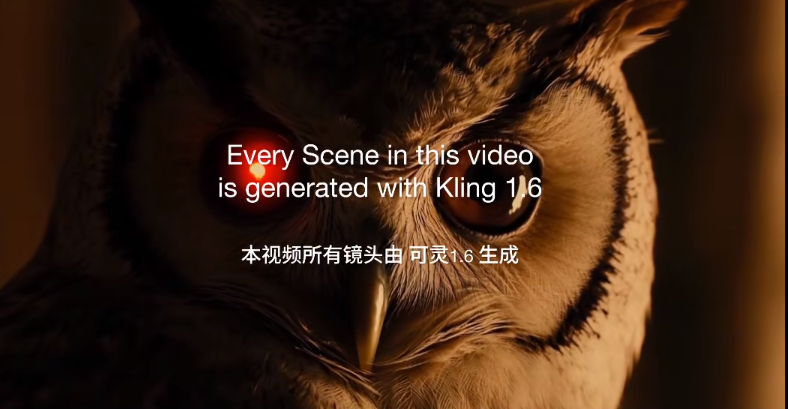
Figure: Screenshot from Kuailing AI 1.6 model concept promotional video
This rapid iteration capability is a testament to Kuaishou's technological accumulation: its self-developed DiT architecture, combined with the flow model base, enhances hardware utilization by 40% through distributed training clusters and operator optimization, innovatively adopting a phased training strategy that utilizes massive data in the initial stage to strengthen conceptual understanding and high-quality data in the later stage to refine details.
Kuaishou's annual R&D investment reached 12.2 billion yuan, accounting for 9.6% of revenue, roughly the same as the previous year, with a focus on video generation and intelligent recommendation.
Apart from this direct revenue, Kuailing AI's technological breakthroughs also directly benefit the platform ecosystem: in e-commerce scenarios, the conversion rate of AI-generated product display materials has increased by 20%, driving the proportion of pan-shelf GMV to reach 30%; in terms of the advertising business, Kuailing-driven eCPM has risen by high single digits, contributing to a 20.1% increase in online marketing revenue to 72.4 billion yuan. Cheng Yixiao stressed during the conference call that Kuailing AI has forged a closed loop of "creation tools - content ecosystem - commercial realization" and will explore more diversified monetization models in the future, including enterprise-level customized services and overseas market expansion.
Overall, Kuailing AI has embarked on a commercialization strategy that advances both the "C-end + B-end" fronts: the C-end introduces a membership payment model with a low-price strategy of 19 yuan for the first month to attract users, boasting a renewal rate exceeding 40%; the B-end outputs technical capabilities to industries such as e-commerce, film and television, and advertising through API interfaces, and has currently reached API subscription collaborations with thousands of domestic and foreign enterprise customers, including Xiaomi, Amazon Web Services, Freepik, and BlueFocus.
Evidently, utilizing Kuailing AI as a spearhead to carve out a new track for AI video content production is likely Kuaishou's most significant plan for Kuailing AI.
It is reported that Kuaishou is currently concentrating its main computing power on large video models, aiming to forge a competitive advantage. Cheng Yixiao emphasized during the financial report meeting that the company will invest in larger-scale R&D over the next three years or even longer, planning to establish Kuailing AI as an "infrastructure for video content production" to serve Kuaishou's main station content ecosystem.
This scenario seems reminiscent of 2011 when Kuaishou's predecessor "GIF Kuaishou" emerged and ignited a vast blue ocean of short videos.
With numerous players vying for dominance, it is premature to determine who will emerge as the "trump card" and who will become "cannon fodder".
However, despite Kuailing AI's current impressive performance, potential risks cannot be overlooked.
Firstly, the technical route has yet to solidify. Currently, there are three paths in the field of video generation: Diffusion, DiT, and LLM. Although Kuailing adopts the DiT architecture, benchmarked against Sora, Google's LLM models such as VideoPoet have demonstrated stronger multimodal fusion potential. If the future technical path shifts, Kuailing may face the risk of architectural reconstruction.
Secondly, user experience still harbors pain points. Currently, the yield rate of high-quality AI-generated videos on the market ranges between 40% and 85%, with frequent issues such as physical flaws and logical confusion. Some users need to attempt hundreds of times to obtain usable materials. This "lottery-style" experience may hinder the large-scale commercialization of this application. Players including Kuailing AI need to further increase investments to enhance their generation yield.
Furthermore, considering that global technology giants are currently investing heavily in the AI field, such as Microsoft and Google, which allocate over 100 billion dollars annually to the development of large models; ByteDance has launched "Lark," and Alibaba has released "Tongyi Qianwen," both attempting to reconstruct content production and the business ecosystem through AI.
At this juncture, Kuaishou chooses to focus on the vertical track of video generation. This differentiated path may help avoid the "money-burning trap" of general large models, but its technical versatility may limit long-term application scenarios.
Moreover, as one of the best application scenarios for AI technology, this vertical track boasts quite a few players, such as Douyin, backed by ByteDance's algorithmic advantages, and Tencent Video, with the largest social ecosystem, both increasing their investments in AI video + ecosystem.
Although Kuailing AI leads in technical parameters and commercialization processes, its commercialization revenue accounts for merely 0.1% of total revenue, and it has yet to form a second growth curve; furthermore, the current profit is obviously far from covering all hardware costs, and whether it can achieve this in the future remains uncertain.
Most importantly, user growth has hit a bottleneck. If Kuaishou ultimately fails to bolster user stickiness through AI tools, it may impact its market position and long-term valuation.
Essentially, AI technology is a double-edged sword that internet companies can wield to reconstruct their business model engines when mired in a stock crisis. It may cause self-inflicted wounds but can also break through growth bottlenecks.
Therefore, as the internet industry transitions from a "traffic war" to a "technology war," Kuaishou's AI strategy is both a bold gamble and a necessary path. Its success or failure is not only contingent on its own fate but also provides an important reference for the industry to explore the integration of technology and commerce.
At least for now, in this era fraught with uncertainties, every iteration of "Kuailing AI and its likes" may redefine the future boundaries of the short video industry.
It is worth noting that on March 27, the Kuaishou WeChat official account announced that Artificial Analysis, a renowned global AI benchmarking agency, released the latest global large video generation model ranking. Kuaishou's Kuailing 1.6pro (high-quality mode) topped the chart of the image-to-video track with an Arena ELO benchmark test score of 1000, followed by Google Veo 2 and Pika Art.
Source: Hong Kong Stocks Research Society

